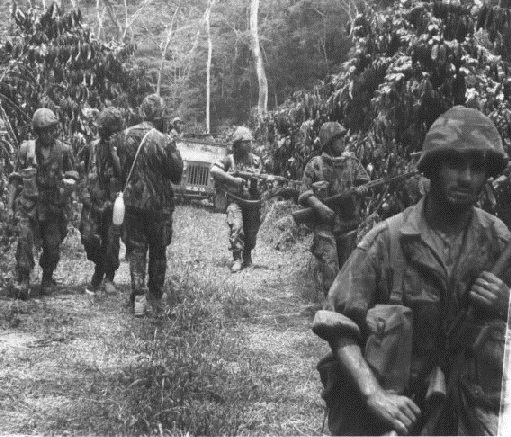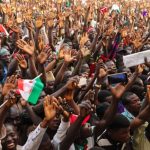In Angola’s Malanje province, the buildings of Camalundu stand abandoned amid open fields. On one of them, the fragmented words “IAN NGOYI” recall a figure little-known in Angola but familiar to South Africans: anti-apartheid leader Lilian Ngoyi.
These large letters partly hide some words that were painted previously. From the faded letters that are visible, I could make out some words apparently in Spanish. These layers of paint – texts of South Africa’s then liberation movement, the African National Congress (ANC), on top of Cuban texts painted on Portuguese colonial buildings – illustrate the changing uses of the site over the years.
Over the past three years I have been part of a project called Global Soldiers in the Cold War. We study the international exchanges of ideas about soldiering and politics that resulted from the interlinked liberation struggles and civil conflicts across southern Africa in the 1970s and 1980s. As part of this research I visited some of the sites where liberation soldiers were trained in Angola.
The sites provide a rare tangible record of the international solidarity that existed during the Cold War: solidarity that prompted Cuba to provide civilian and military expertise to Angola’s MPLA-led government and to liberation movements from Namibia, South Africa and Zimbabwe. The liberation movements looked not only to their own countries’ histories but to earlier struggles in Cuba and Vietnam for ideas and inspiration.
After taking control of independent Angola in 1975, the People’s Movement for the Liberation of Angola (MPLA) – still fighting a civil war against its rival, National Union for the Total Independence of Angola (Unita) – gave refuge to liberation fighters from Zimbabwe, Namibia and South Africa. The apartheid regime in South Africa, determined to undermine the liberation movements, provided military support to Unita in order to weaken the MPLA. Both the MPLA and the exiled movements enjoyed the support of Cuban and Soviet military advisers.
Camalundu, established by the colonial government as an agricultural training centre, was used by the MPLA first as a civilian and later as a military training centre, with Cuban personnel.
Places of learning and solidarity
Historians have viewed liberation guerrilla training camps as a particular kind of social and political environment. Host countries like Angola allowed exiled movements to act, to a certain extent, like enclave governments with state-like powers over their own members.
Guerrillas, already filled with idealism, absorbed ideas and experiences from their new environment. But they were also at the mercy of national and international strategic calculations, without the immediate prospect of returning home in triumph.
Camps were places where liberation fighters came into contact with officials and soldiers from their host countries, as well as trainers from Cuba and the Soviet Union. The slogans painted at Camalundu provide evidence of how people were taught that they were there as part of a global struggle.
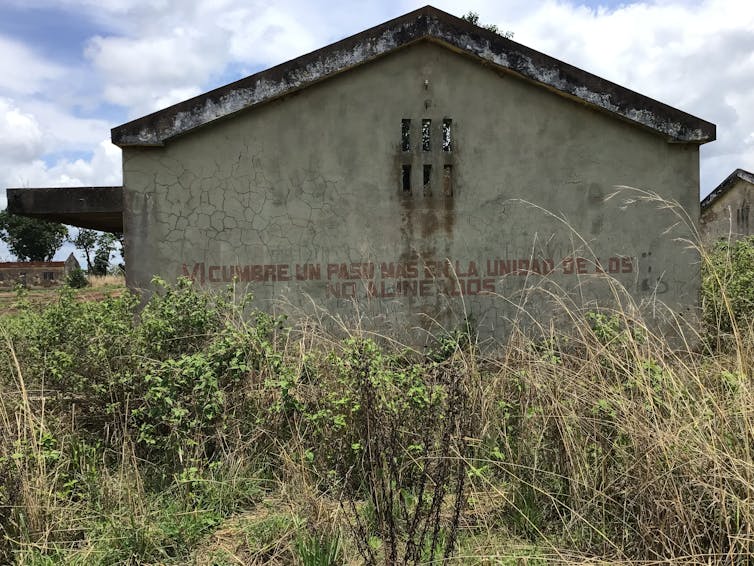
Facing the building with Lilian Ngoyi’s name was another slogan in Spanish: “VI cumbre un paso mas en la unidade de los no-alineaos” (six completes another step in the unity of the non-aligned), a reference to the sixth congress of the Non-Aligned Movement, which was held in Havana in 1979.
From King Cetshwayo to Ho Chi Minh
South African history appears again with the name of Cetshwayo, the last Zulu monarch to resist the British Empire before conquest. His name was painted above the entrance of another now-abandoned building. This was likely painted in 1979, the ANC’s “Year of the Spear”, the centenary of the Battle of Isandlwana when Cetshwayo’s army resisted the better-armed British.
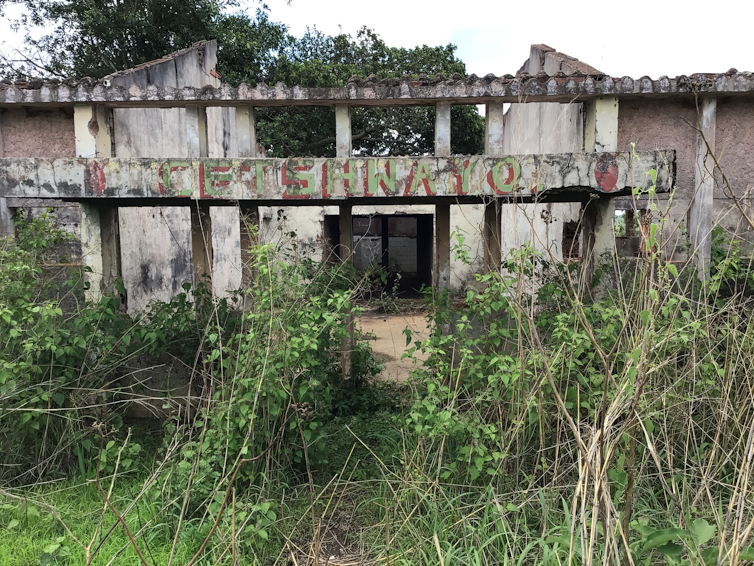
On a similar building, the letters “…O C… MI…” point to the commemoration of the Vietnamese revolutionary leader Ho Chi Minh. On another building, the remains of his portrait are just about visible, above the English translation of a slogan associated with him:
An ANC delegation visited Vietnam in 1978, a visit that had a profound effect on its military strategy.
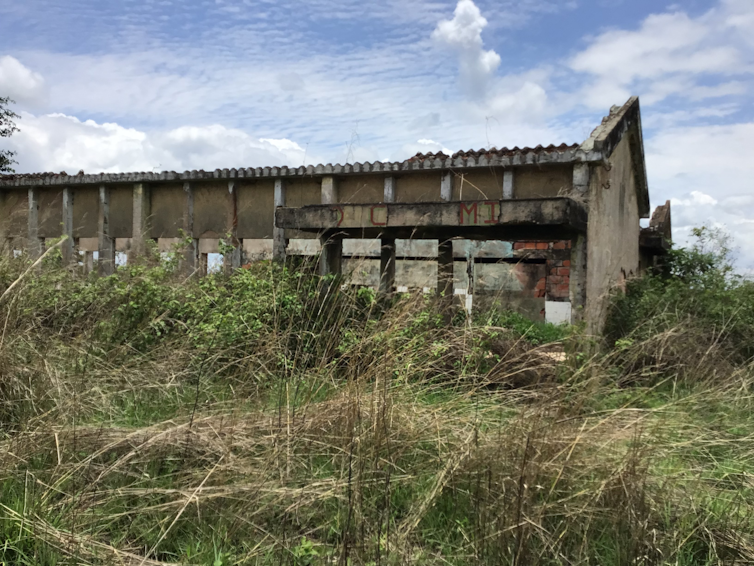
Many of the slogans at Camalundu seem to point to events between 1978 and 1980. Not long after that, the ANC presence there ended when its soldiers were moved to Caculama, further east. Caculama had housed a training camp established by the Zimbabwean African People’s Union (Zapu), which became vacant after Zimbabwe became independent in 1980 and the Zimbabwean soldiers went home.
Around the same time, American president Ronald Reagan and South African prime minister PW Botha renewed their respective countries’ commitment to supporting Unita against the MPLA. The Angolan ruling party had taken a firm stand against apartheid and Washington saw it as a bridgehead for communist influence.
The MPLA began to see the foreign liberation fighters it was hosting as a potentially useful military reserve. The former ANC soldier Luthando Dyasop recalls how ANC leader Oliver Tambo told soldiers of the ANC’s army, Umkhonto we sizwe (MK), they needed to “bleed a little” in recognition of Angola’s support for the South African struggle.
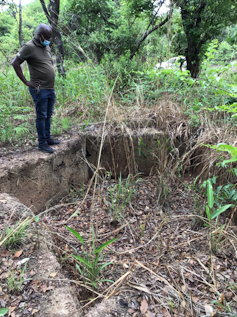
Southern Africa liberation movements and geopolitics
Whereas Camalundu’s buildings stand in open countryside, Caculama is buried in thick bush. Trenches and the remains of underground bunkers remind us that this was the front line of the MPLA’s war against UNITA. Exiled movements were responsible for their own security within Angola. When the MPLA positioned ANC soldiers somewhere like Caculama, it knew that in defending its own camps, the ANC would also be part of the government’s defensive lines.
In their different ways, Camalundu and Caculama provide historians with evidence of liberation struggles and how they were entangled with the international politics of the time.
A Zimbabwean government delegation, I was told, had visited Caculama shortly before I was there – an acknowledgement at least of the site’s historical significance. Yet so far almost no attention has been given to preserving these sites.
A longer article about the training sites with more photos was published by Sources journal.
The above was written by Justin Pearce (Senior lecturer, Stellenbosch University) and first published in The Conversation

